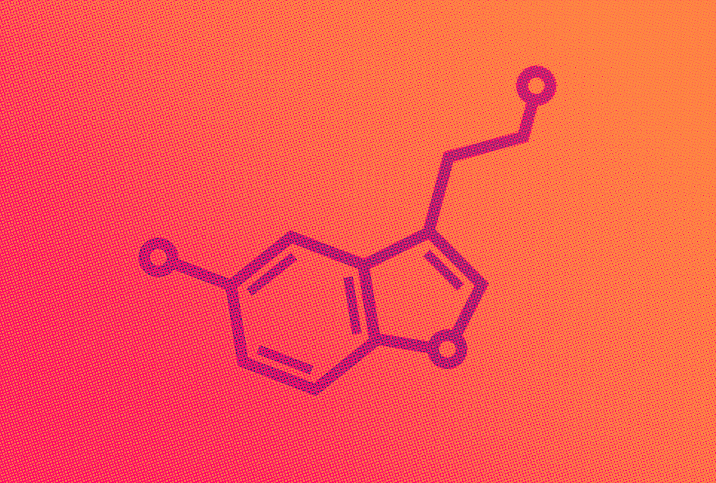The Facts About Mental Health

Nearly 20 percent of Americans, including 1 in 6 under the age of 18, are living with a mental health disorder, and 1 in 20 is coping with a serious mental illness. While commonalities can be found, mental health disorders are diverse and have complex risk factors, diagnosis, treatment and outlook.
Types of mental illness
Mental health disorders, which cause changes in emotion, thinking and/or behavior, are wide-ranging in severity, prevalence, symptoms and risk factors. The most common include anxiety, mood, eating or personality disorders, addiction, dementia, psychosis and dissociative disorders.
Anxiety disorders cause persistent feelings of fear, apprehension and dread outside of normal stressful situations, often for months on end. These include generalized anxiety disorder (GAD), obsessive-compulsive disorder (OCD), panic disorder, post-traumatic stress disorder (PTSD) and social anxiety disorder, which are the most common mental illnesses affecting Americans, with more than 18 percent of the U.S. population diagnosed with them. People with anxiety disorders have an increased likelihood of hospitalization.
One in 100 Americans suffers from OCD, and nearly 1 in 28 from PTSD. Obsessive-compulsive disorder is characterized by repeated, unwanted thoughts (obsessions) and the urge to repeat a behavior incessantly (compulsions). Post-traumatic stress disorder is characterized by severe anxiety, nightmares, uncontrollable thoughts, flashbacks and nightmares related to a traumatic event the individual witnessed or experienced.
Mood disorders affect 1 in 10 Americans and range from major depression and bipolar disorder to dysthymia and substance-induced mood disorders. Mood disorders can appear as abnormal swings in temperament, with lows described as feeling hopeless or low-energy and highs as feeling manic or invincible. Depression is most common, impacting 3.1 percent of Americans and causing various symptoms, including feelings of sadness and loss of interest in activities. Bipolar disorder causes impulsive and reckless behaviors, and unusual shifts in mood, energy, and concentration, with manic emotional highs and extreme lows.
Eating disorders involve a damaged relationship with food that results in unhealthy eating habits, including food restriction, bingeing or purging, overexercising, and obsession with weight and body image. A 2009 study from the Journal of Abnormal Psychology reported that by age 20, 12 percent of girls have had some form of an eating disorder. These conditions include anorexia (characterized by extreme calorie restriction and abnormally low body weight); bulimia nervosa (in which large quantities of food are eaten and purged through exercise or self-induced vomiting); binge-eating disorder (the most common illness, in which extreme amounts of food are consumed without control); and, more rarely, pica eating disorder and rumination disorder.
Personality disorders are defined by unhealthy and inflexible patterns of thinking, behaving and functioning, and impact a surprising 9 percent of Americans. They include cluster A personality disorders (paranoid, schizoid, schizotypal), featuring odd or eccentric and paranoid behaviors; cluster B (antisocial, borderline, histrionic, narcissistic), in which an individual's thinking and behavior are dramatic, emotional and unpredictable; and cluster C (avoidant, dependent, obsessive-compulsive), characterized by anxious or fearful thought patterns and behavior. These personality disorders may be complicated by any of the other diagnoses mentioned above.
Addiction is a disease characterized by uncontrollable impulses to utilize or overutilize a (usually harmful) substance, or engage in a behavior that provides pleasure or gratification despite negative consequences on life and/or health.
Common addictions include substances such as tobacco, alcohol, opiates, cocaine, heroin, benzodiazepines and stimulants, and activities such as gambling, shopping, gaming and sex. An estimated 21 million Americans have at least one addiction, and a 2017 Pew Research Center survey reported 46 percent of American adults have a friend or family member who has battled drug addiction.
Risk factors
Research indicates mental health disorders are the result of a number of risk factors and causes. Genetics and family history have a significant impact. Environment also plays a role—exposure to substances in the womb or environmental toxins—as do biochemical processes in the brain. Lifestyle choices, such as diet, physical activity, chronic diseases and substance use, also make a difference.
Other risk factors include history of trauma, abuse or neglect; a stressful job, home life or financial situation; traumatic brain injury; military combat; alcohol or drug use; previous mental illness; and having few friends or little social support. Women, young adults and minorities are more likely to experience these risk factors.
Anxiety disorders are strongly linked to depression, as almost half of depression sufferers have a diagnosis of anxiety.
Experiencing rape or childhood sexual abuse are two of the strongest risk factors for PTSD, but others include witnessing a gory, dangerous or deadly event, a catastrophic natural disaster, getting seriously injured, feeling extreme fear or horror and having no social support after a triggering event.
While mood disorders are typically linked to irregularities in brain chemistry and neurotransmitter levels, traumatic life events, family history and environment play a role. Being younger or female, having hypothyroidism, suffering from chronic pain or a sleep disorder, using substances and feelingisolated all increase your risk.
Eating disorders can be the product of an array of biological, sociocultural and psychological influences. Risk factors include family history of an eating disorder or other mental health condition, history of dieting or burning more calories than consumed, type 1 diabetes, body dissatisfaction, perfectionism and a history of being teased or bullied.
In general, the cause of most personality disorders isn't known, but family history and certain irregularities in brain chemistry may be relevant.
Addiction risk factors include stress, family history of addiction or drug use, having friends or peers who abuse drugs, being exposed to and consuming drugs for the first time at a young age, taking highlyaddictive drugs and metabolizing drugs quickly.
Diagnosis
Mental health disorders are diagnosed by a qualified clinician, usually a psychiatrist or psychologist. Evaluation typically begins with a physical exam to check for medical problems that may be causing or contributing to the condition.
Laboratory tests can also help evaluate for certain medical conditions, such as hypothyroidism, and screen for alcohol and drugs. A thorough psychological evaluation by a doctor, clinical psychologist or other mental health professional includes a discussion of symptoms, thoughts and feelings, family, and personal history and personal behaviors. At times, it may also include the clinician speaking with your loved ones
Questionnaires are also commonly used, and diagnoses are made based on the Diagnostic and Statistical Manual of Mental Disorders, Fifth Edition, or DSM-5, criteria.
Treatment
Treatment for mental health disorders varies depending on the diagnosis, patient characteristics and preferences. A primary care provider may be able to treat the patient, or the intervention of a psychiatrist or team of mental health providers may be required.
Treatments are commonly applied in combination, including medications (antidepressants, anxiolytics, mood stabilizers, antipsychotics), psychotherapy (such as cognitive behavioral therapy, or CBT), brain stimulation treatments (including electroconvulsive therapy), inpatient care in a psychiatric hospital or other residential treatment programs, intensive outpatient treatment and substance abuse treatment programs.
Anxiety disorders are highly treatable with psychotherapy, pharmacotherapy or both, yet only 37 percent of sufferers seek treatment. Treatment for obsessive-compulsive disorder typically focuses on cognitive behavioral therapy, aversion therapy, exposure and response prevention (ERP), desensitization, rational emotive behavior therapy (REBT) and medications, including SSRIs, tricyclic antidepressants and anxiolytics. Post-traumatic stress disorder treatment includes medications, CBT, eye movement desensitization and reprocessing (EMDR) and SSRIs.
Only 43 percent of people with depression seek help managing their mental health. Depression can be treated with cognitive behavioral therapy, psychotherapy, antidepressants (SSRIs, SNRIs, tricyclic antidepressants), anxiolytics and electroconvulsive therapy. Bipolar disorder is treated with CBT, family therapy, psychotherapy, support groups, anticonvulsants, antipsychotics, SSRIs and supportive care, including hospitalization if needed.
Eating disorders are typically treated with a combination of CBT, group CBT, family therapy, nutrition education and planning, antidepressants, hospitalization, hospital day treatment programs and ongoing medical monitoring and care.
Treatment for personality disorders may include psychotherapy, antidepressants, mood stabilizers, antipsychotics, anxiolytics and hospital and residential treatment programs.
Addiction treatment can vary but may include drug/alcohol detoxification, inpatient and outpatient rehab, sober living homes and 12-step programs such as Alcoholics Anonymous (AA) and Narcotics Anonymous (NA).
Therapy is a common element, including CBT, biofeedback, dialectical behavior (DBT), experiential, holistic, motivational enhancement (MET), psychodynamic and rational emotive behavior therapy. Medications include acamprosate, benzodiazepines, antidepressants, naltrexone, methadone and buprenorphine. Support groups and faith-based treatments are often critical aspects of recovery.
Actions around the home can increase the likelihood of successful treatment. If you are suffering from a mental health illness, learn as much as you can about it, including what helps you and what doesn't. Educate others and be open about your mental illness when you feel comfortable. Create a support group, either with family and friends or other sufferers.
Even if it's not an element of your mental illness, avoid alcohol or drug use. Stick to your treatment plan, including taking all medications as prescribed and attending all appointments. Look after your health—eat a balanced, primarily whole-foods diet, get plenty of physical activity, practice good sleep hygiene, stay hydrated and work on stress reduction.
Mitigate problems related to your mental illness by avoiding making important decisions when symptoms are at their worst. Cut back on unnecessary obligations if they hinder treatment or feel too taxing. Prioritize goals and be realistic about them.
Take a break when you need it, and don't blame yourself for your illness. You didn't choose it, but you can give yourself the best shot at beating it. Be positive and practice self-love.
Outlook
Left untreated, most mental health disorders will worsen with time. Several, including personality disorders, are difficult to treat under any circumstances and may have poor outcomes. Some mental illnesses, such as addiction, can go into remission only to return as relapse. However, with treatment, most mental health sufferers do get better. Anxiety, in particular, is considered highly treatable, with patients who develop and adhere to care plans experiencing generally good outcomes. Lifestyle changes and stress reduction can bolster odds of success.
On a positive note, an increasing number of businesses are offering mental health services and counselors to support their employees. The hiring of substance abuse, behavioral and mental health counselors is projected to jump by 25 percent between 2019 and 2029.
A growing awareness of mental health issues has slowly contributed to a decrease in the stigma surrounding them (although it still remains a problem). The public can help by talking openly about mental health issues, educating themselves and others, being mindful of language, showing compassion for those with mental illness, advocating for equal treatment and speaking out against discrimination.
While some mental health disorders do subside, others are lifelong. The majority of mental illnesses have no cure but can be well managed with treatment, with excellent results that allow you to function comfortably and enjoy life.


















